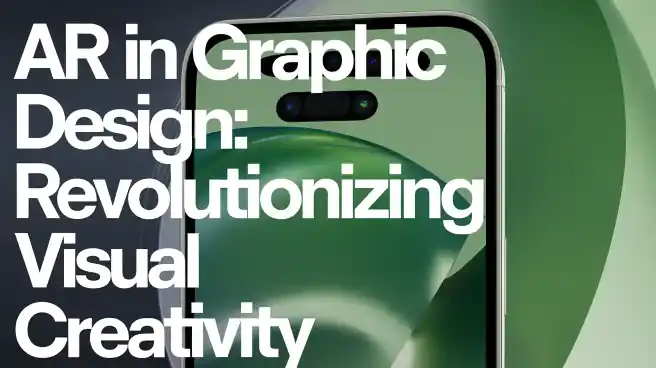Introduction to AR in Graphic Design

Augmented Reality (AR) in graphic design is transforming the way designers create and interact with visual content. By integrating AR in graphic design, artists can produce immersive experiences that captivate audiences and elevate brand engagement. This technology allows for the blending of digital elements with the real world, making designs more dynamic and interactive.

The Impact of AR in Graphic Design
The use of AR in graphic design has opened up new possibilities for creativity and innovation. Designers can now create visuals that not only look stunning but also engage users in ways that traditional designs cannot. For instance, AR in graphic design can bring static images to life, allowing users to interact with them through their smartphones or AR glasses. This level of interactivity can significantly enhance user experience and make designs more memorable.

Applications of AR in Graphic Design
AR in graphic design is being used across various industries to create unique and engaging content. In advertising, AR can turn a simple poster into an interactive experience, where users can scan the poster with their phones to see animations or additional information. In packaging design, AR can provide customers with a 3D view of the product, offering a more detailed and engaging way to explore the product features. The possibilities of AR in graphic design are endless, and its applications are only limited by the designer’s imagination.

Challenges and Future of AR in Graphic Design
While AR in graphic design offers numerous benefits, it also comes with its own set of challenges. One of the main challenges is the need for specialized skills and tools to create AR content. Designers need to be proficient in AR development platforms and have a good understanding of how to integrate AR elements into their designs seamlessly. Despite these challenges, the future of AR in graphic design looks promising. As technology continues to evolve, we can expect to see even more innovative uses of AR in graphic design, making it an essential tool for designers.

Conclusion
In conclusion, AR in graphic design is revolutionizing the way we create and interact with visual content. By incorporating AR in graphic design, designers can produce more engaging and interactive experiences that captivate audiences and elevate brand engagement. As the technology continues to advance, the potential for AR in graphic design will only grow, offering endless possibilities for creativity and innovation.
